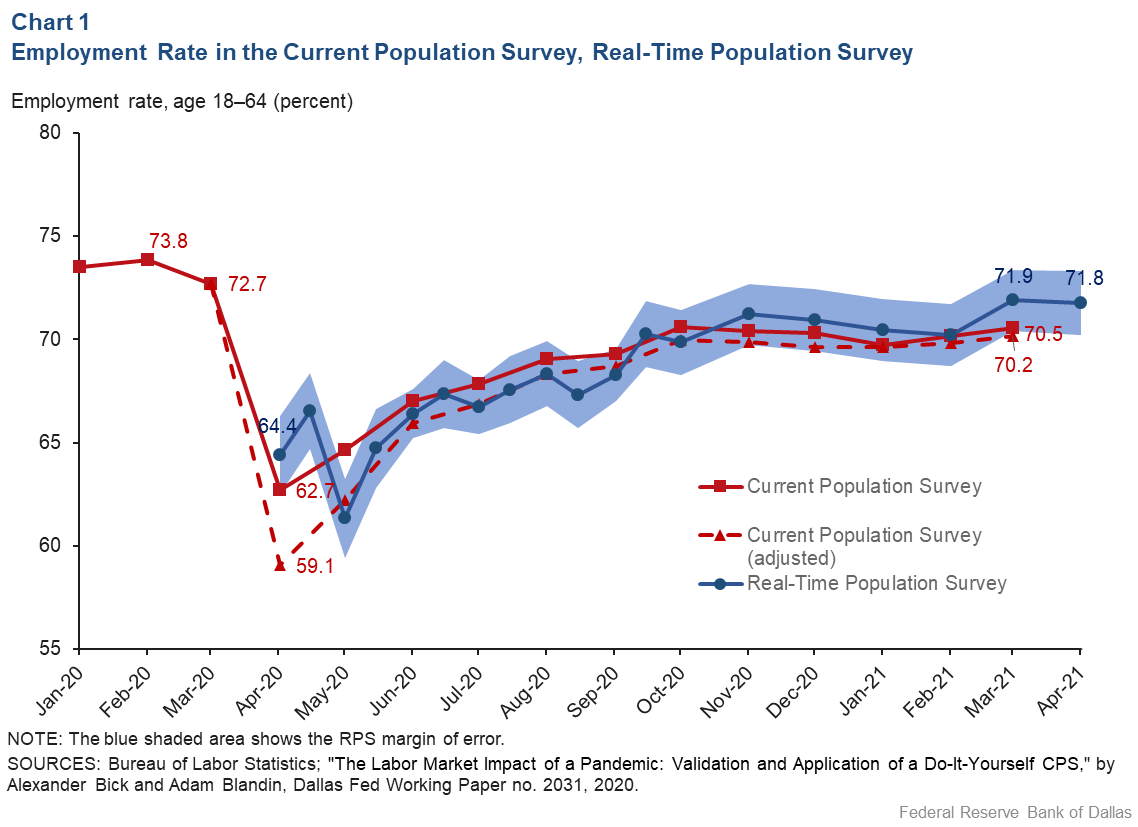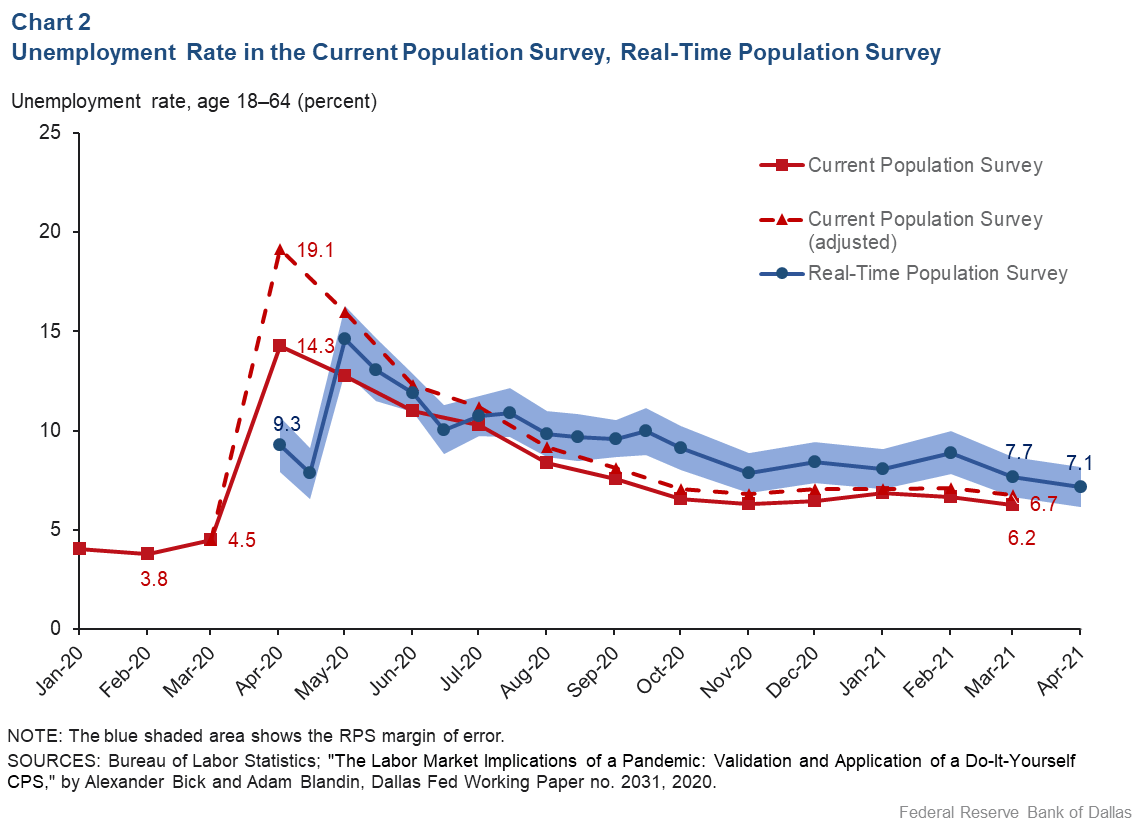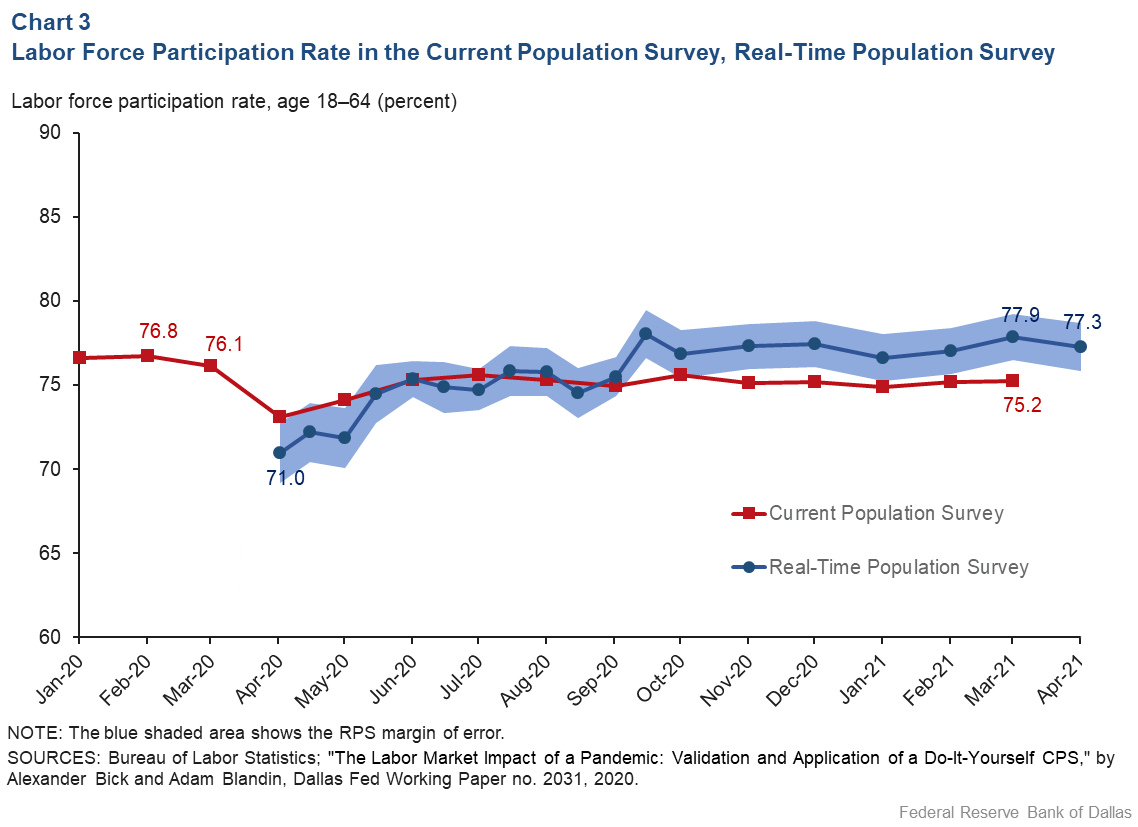
U.S. Economy
Real-Time Population Survey (RPS)
Note: The RPS for the week of April 11–17 reflects changes to the survey weighting methodology that improve its alignment with the Current Population Survey (CPS), which is used to calculate the official U.S. unemployment rate report. The results from the previous RPS surveys have been adjusted for consistency. The series depicted below include the revisions and, thus, differ from earlier releases.
April 23, 2021
Employment Rate Flat in Mid-April
- The employment rate for working-age adults (18–64) was 71.8 percent in the RPS for the week of April 11–17, little changed from the revised estimate of 71.9 percent for the week of March 14–20.
- In mid-March, the RPS employment rate of 71.9 percent exceeded the most recent CPS estimate of 70.5 percent for working-age adults (18–64). The Bureau of Labor Statistics continued to report that some individuals “with a job but absent from work because of the coronavirus” were misclassified as employed during the CPS interviewing process.
In contrast, the RPS did not record an unusually high number of persons not at work, suggesting that the same misclassification did not occur in the RPS. Reclassifying the individuals absent from work in the CPS survey leads to an adjusted employment rate among working-age adults of 70.2 percent for the week of March14–20.

Unemployment Rate Decreases Markedly
- The unemployment rate in the RPS was 7.1 percent for April 11–17, substantially below the revised estimate of 7.7 percent for March 14–20.
- In mid-March, the 7.7 percent unemployment rate in the RPS exceeded the official CPS estimate of 6.2 percent for working-age adults (18–64) and was also above the alternate estimate of 6.7 percent after reclassifying those “absent from work because of the coronavirus’’ as unemployed.

Labor Force Participation Rate Decreases
- The labor force participation rate was 77.3 percent in the RPS for April 11–17, a decrease relative to the revised estimate of 77.9 percent for March 14–20.
- In mid-March, the estimated 77.9 percent RPS participation rate compared with an estimate of 75.2 percent in the CPS.

Next release: May 21
RPS Authors
The RPS was developed by Alexander Bick, an associate professor at WP Carey School of Business at Arizona State University, and Adam Blandin, an assistant professor in the Department of Economics at Virginia Commonwealth University, in collaboration with Karel Mertens, a senior economic policy advisor in the Research Department at the Federal Reserve Bank of Dallas.